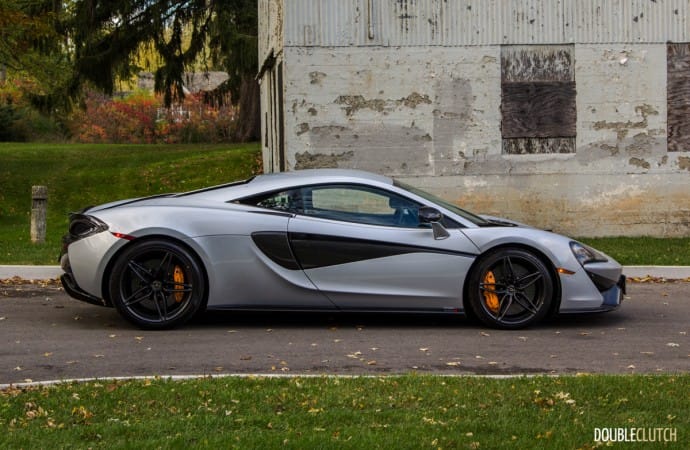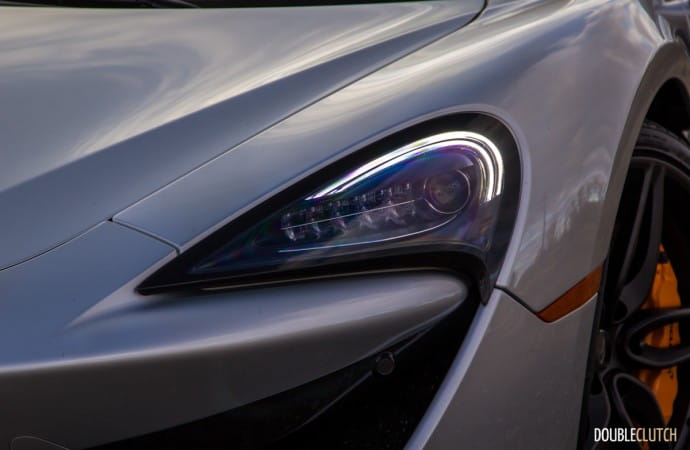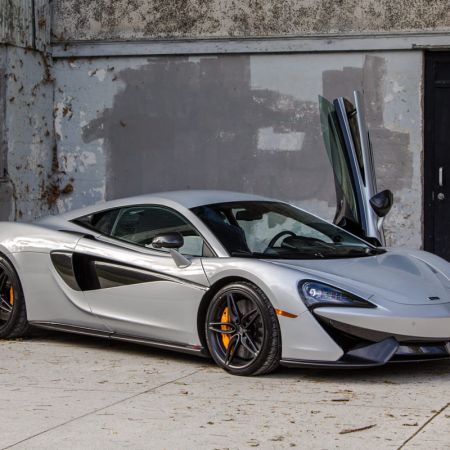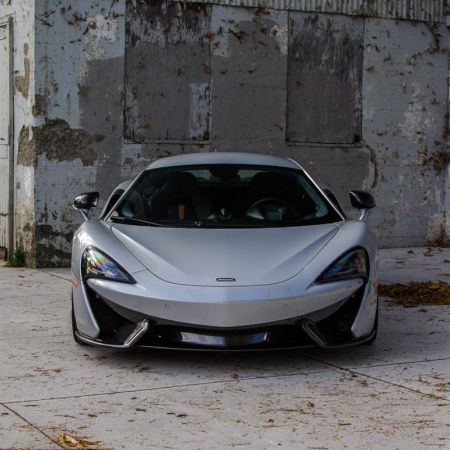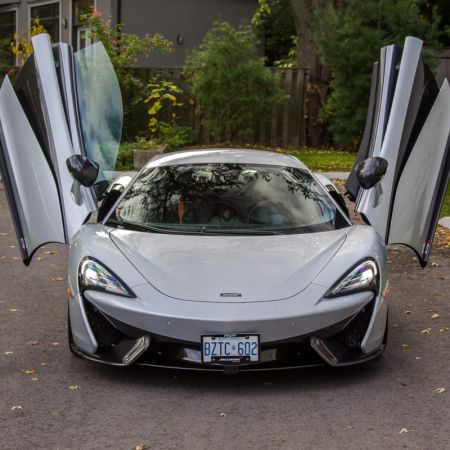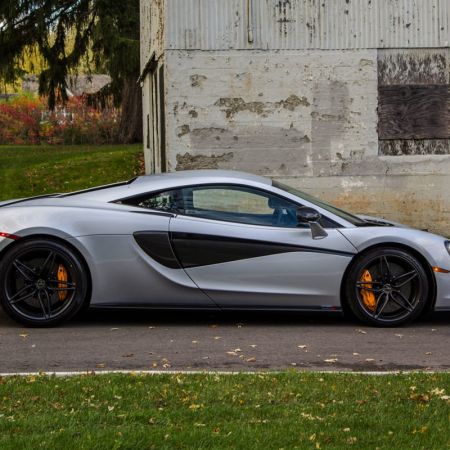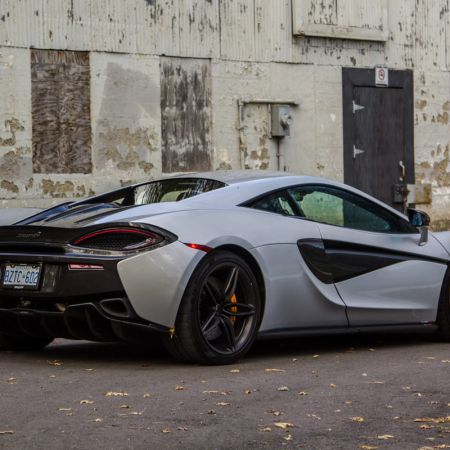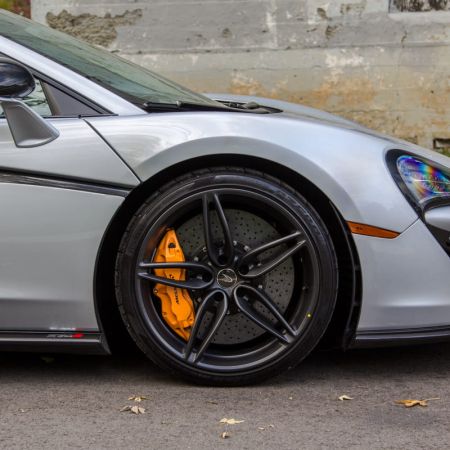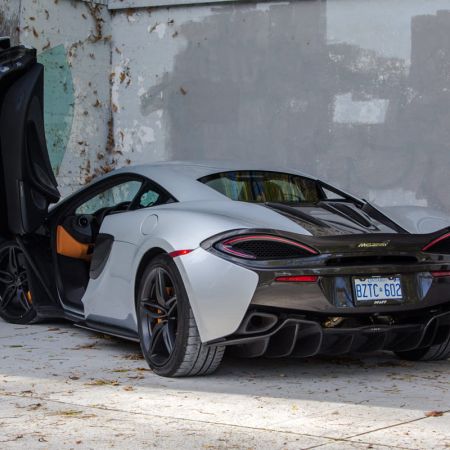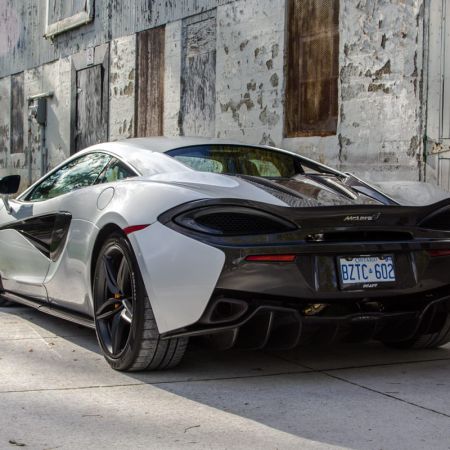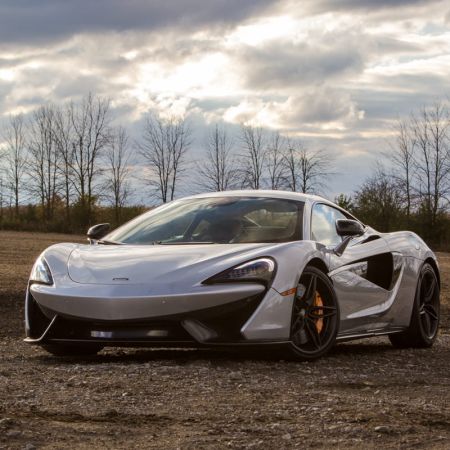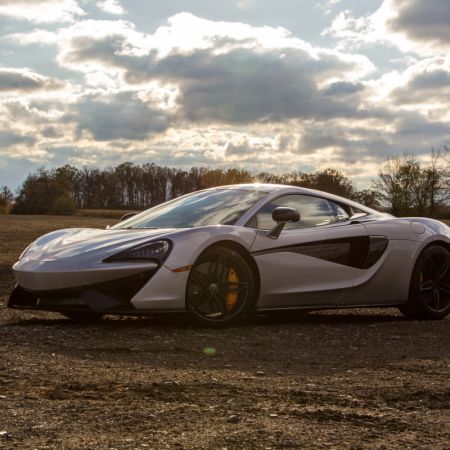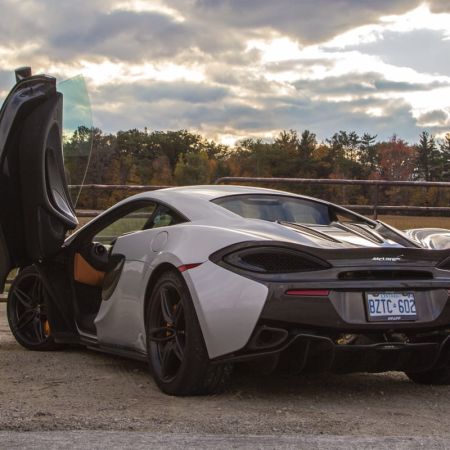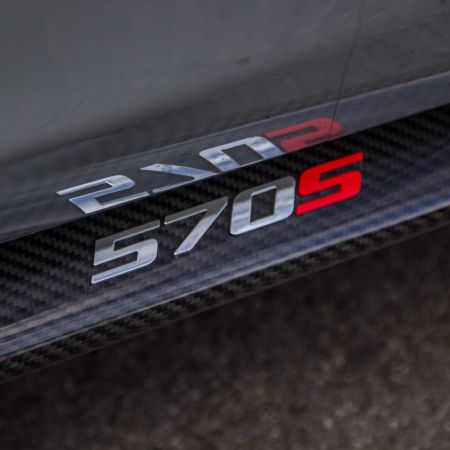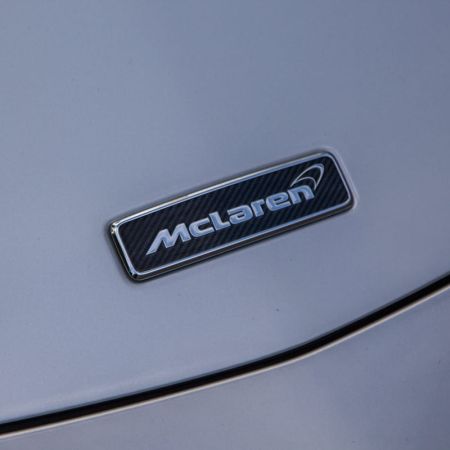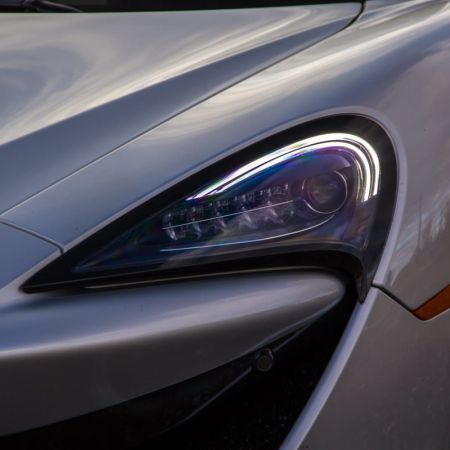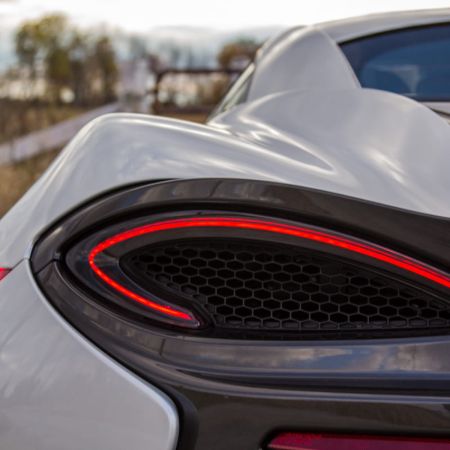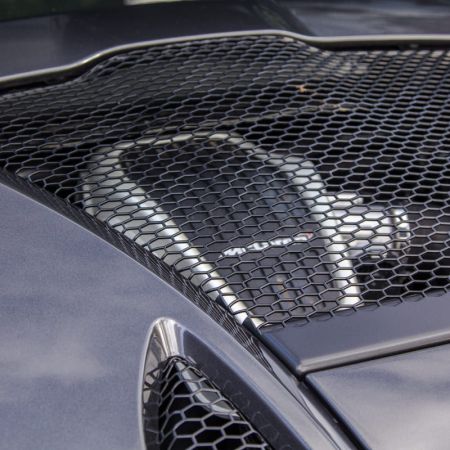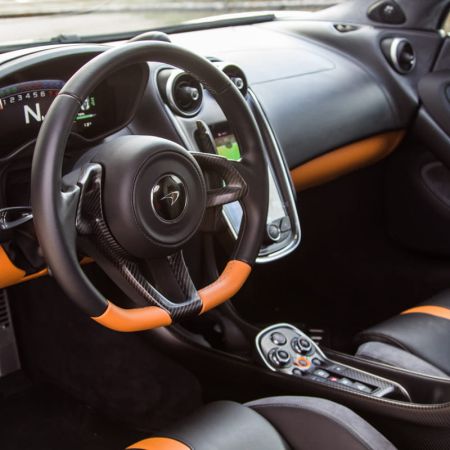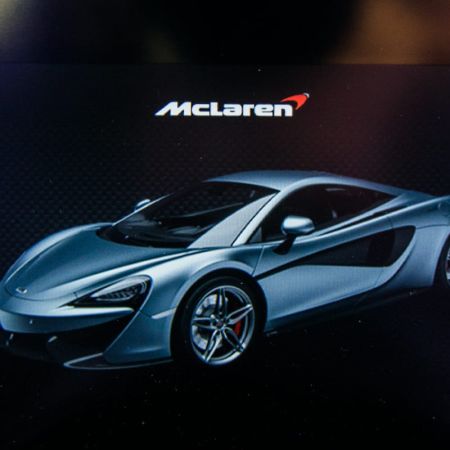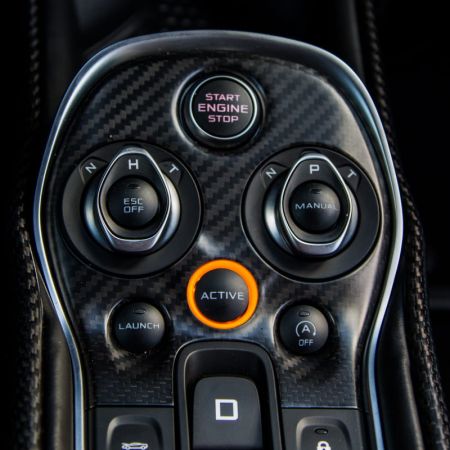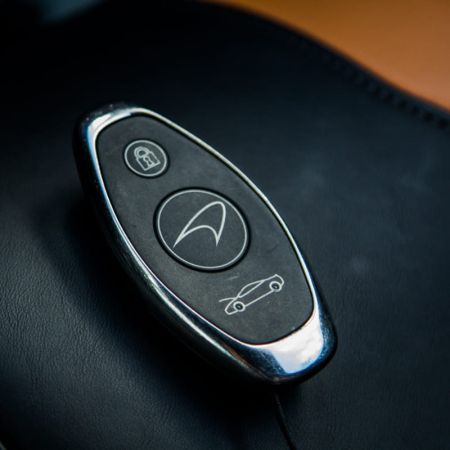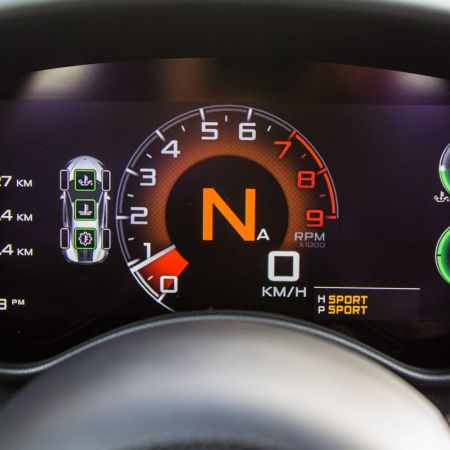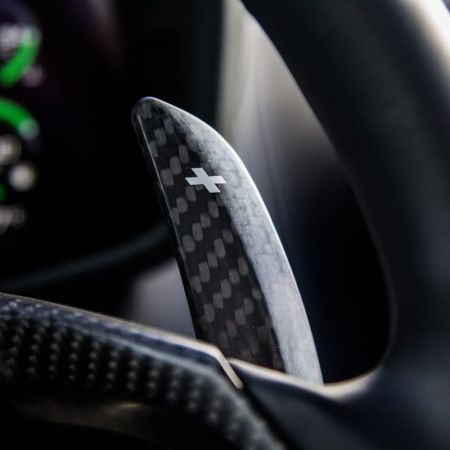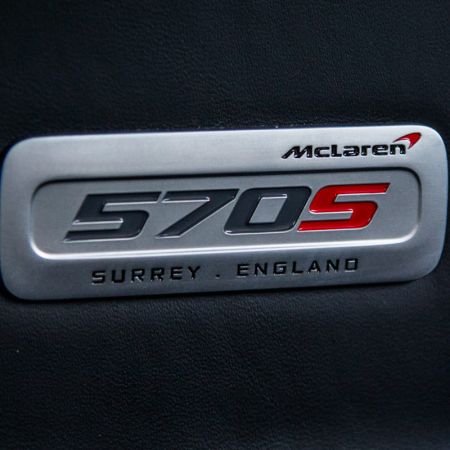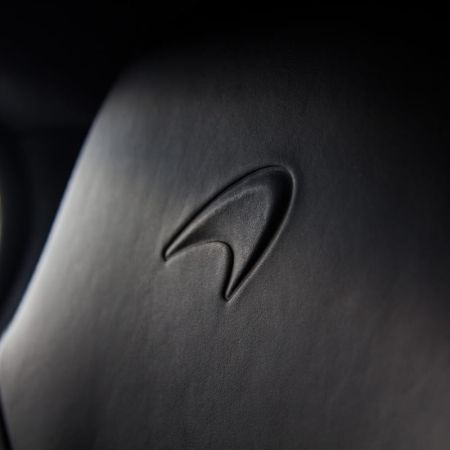Supercars have always been and will continue to be the envy of onlookers everywhere. With sufficient selection between brands like Lamborghini, Ferrari, and Aston Martin, posters in car nuts’ bedrooms are flashier than ever. There is however, a brand that builds cars in Surrey, England that made a re-entry half a decade ago and is thriving. McLaren is most well known for their F1 hypercar that put them on the map, and made a re-entry with the MP4-12C in the 2012 model year. Now offering a full lineup of supercars, we were given the keys to a 2017 McLaren 570S Coupe to put more context into why this really is the everyday supercar.
Perfectly visible beneath the fixed engine cover, hustling the 570S is a twin-turbocharged 3.8L V8 that feels like it’s straight out of an F1 car. It does exhibit some turbo lag lower in the rev range, but power delivery is quite linear and when peak power (562) does show itself at the 7,500RPM mark, the car pulls like a bat out of hell. Torque is rated at 443 lb-ft., and comes in between 5,000 and 6,500RPM. McLaren claims a 0-100km/h run of 3.2 seconds and a top speed of 328 km/h. We didn’t get a chance to put this car to the true test on the track, but what we can tell you is that it’s seriously fast and seemingly unstoppable.
Technical prowess is one thing, but the McLaren charm is more than just sheer power output (as good as that may be). Part of McLaren’s Sports Series (along with the 540C, 570S Spider, and 570GT road cars), the 570S is the athlete of the bunch. The steering is incredibly lively, and well weighted. It’s still on the light size, but there is a good amount of communication between the driver’s fingertips and the road, implying the 570S is talking to the driver every second. The rear-drive setup of the car means if stability control is shut off, the car will dance into oversteer very easily.
There are three handling modes controlled by a toggle on the center console, located within the “Active Dynamics Panel”. Switchable between Normal, Sport, and Track modes, the 570S’ adaptive dampers do an excellent job of keeping the car planted in all settings. When in its most aggressive Track setting, everything is at its firmest and road imperfections are felt. The powertrain can also be altered between the same three settings, and this adjusts engine mapping as well as shift points on the seven-speed dual-clutch transmission. In automatic mode, the gearbox knows exactly what it’s doing, and in manual mode, the large carbon-fiber paddles are extremely responsive and satisfying to use.
We tested the Alfa Romeo 4C (reviewed here) last year and were immensely impressed with the carbon fibre tub. The McLaren 570S uses a very similar concept, and it’s called the MonoCell II. This is a very light tub weighing in at only 75kg; particularly relevant because McLaren was the brand that introduced the carbon fiber technology in their Formula One application many years ago. The MonoCell II is exceptionally rigid and creates a very stable platform that is also resistant to corrosion.
Perhaps most peculiar is just how much the estimated fuel range in the trip computer changes as the 570S is cycled through various driving modes. This car is rated at 16.5L/100km in the city and a mind-blowing 7.4L/100km on the highway. Our test took place in mixed conditions, but mostly rural driving, and resulted in a reasonable 12.3L/100km. The 72L tank should only be fueled with 93-octane ultra-premium grade fuel or higher.
From a design standpoint, the 570S is very obviously a McLaren. Even when painted in a conservative liquid silver, our test vehicle managed to garner stares from most people it encountered. The unique difference here is that unlike the eye-rolling scoffs that a Ferrari or Lamborghini would get, people actually appreciate that this is something special and out-of-the-box. The LED light strips, 20” wheels, and carbon-fiber side mirrors give the 570S an identity of conservative and under-the-radar beauty that’s finished off with the stylish dihedral doors.
Climbing in through said doors is much simpler than other setups like the BMW i8 (reviewed here) thanks to a lower sill, and once inside, the cockpit of the car reveals the perfect combination of Alcantara and carbon fiber. Everything is very simplistic and ergonomically correct, though the power seat controls are some of the most convoluted I have ever experienced. Regardless, once settled the driving position is excellent and visibility out of the windshield and side windows is very generous for a supercar.
In order to keep weight down, the 570S has a minimalist interior, and that is exactly what buyers want. The touchscreen infotainment system is responsive and easy to use, and includes USB, Bluetooth connectivity, and dual-zone climate control. The setup lacks Apple CarPlay/Android Auto, but it’s just not necessary in a car that is as purpose-built as this McLaren is. A simple stalk off the steering column can raise the front end to ensure that the car’s low stance doesn’t cause it to scrape – a nice touch that will be appreciated by those driving their 570S in downtown cores.
At a starting price in Canada of $219,750, the 2017 McLaren 570S Coupe is by no means an affordable car. It does, however, offer a dynamic driving experience that stays true to what the purist community wants. It foregoes the “flash” of the Italians in favour of aural engagement that will keep a shameless grin on your face well past 7,000RPM. The 570S is the supercar for the buyer who desires the intelligent choice that doesn’t compromise emotion or passion, but wants to keep some semblance of actual real-world usability.


